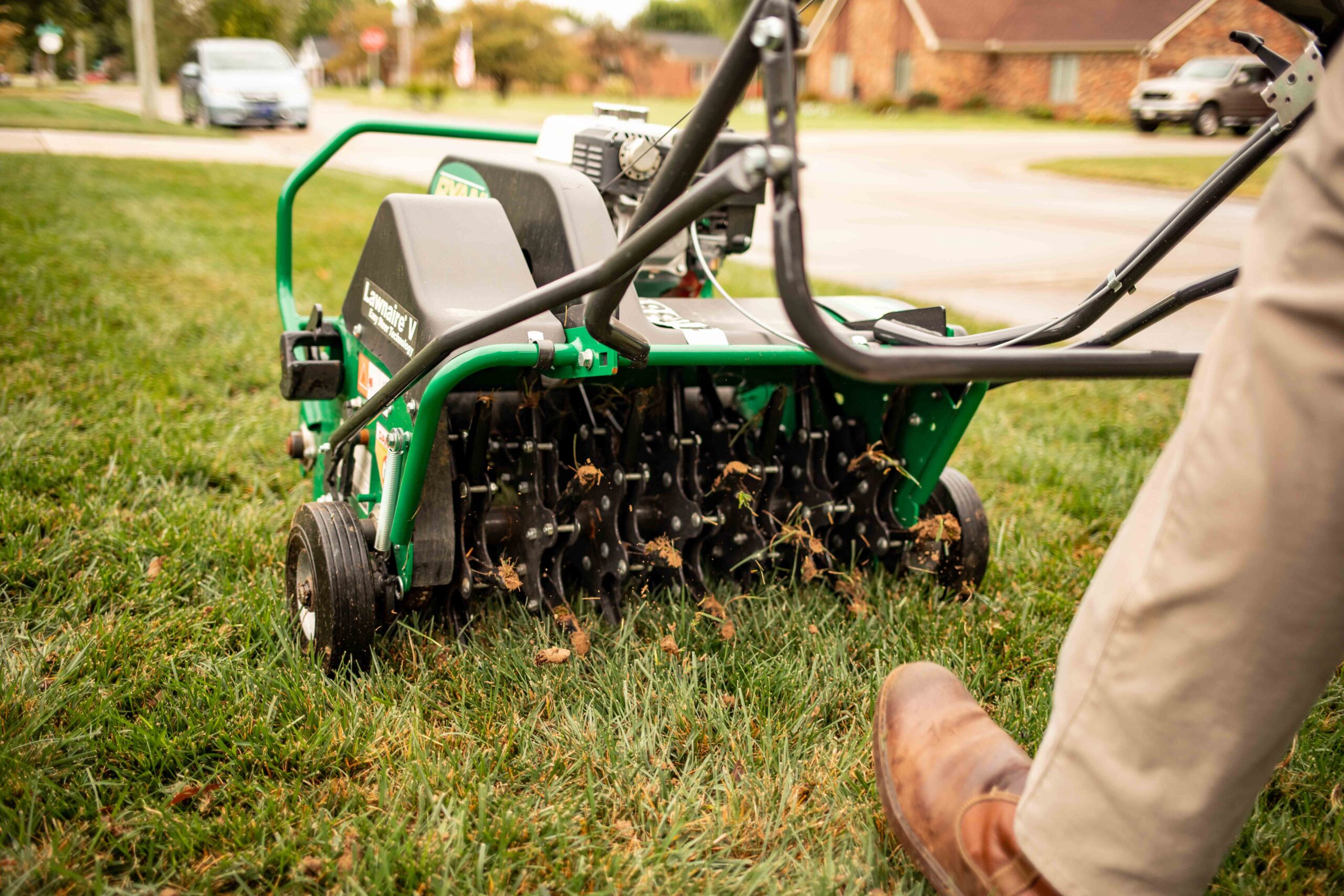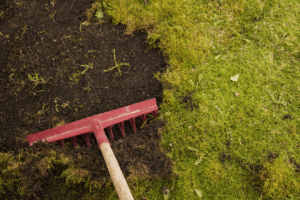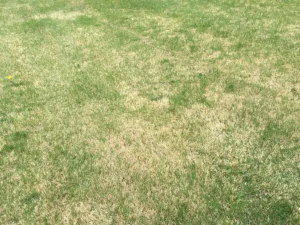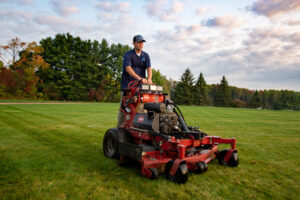Transform Your Struggling Lawn With Core Aeration: A Complete Guide
Problem/Need Statement
Is your lawn showing signs of compaction? Walking areas that feel hard underfoot, standing water after rain, and struggling grass despite regular fertilizing are all indicators that your soil may be too dense for healthy root growth. Core aeration—the process of removing small plugs of soil and thatch—could be the solution your lawn needs.
Solution Overview
Core aeration creates pathways for air, water, and nutrients to reach grass roots while alleviating soil compaction. This comprehensive guide will walk you through the entire process, from determining if your lawn needs aeration to executing the perfect timing and technique for your grass type and climate zone.
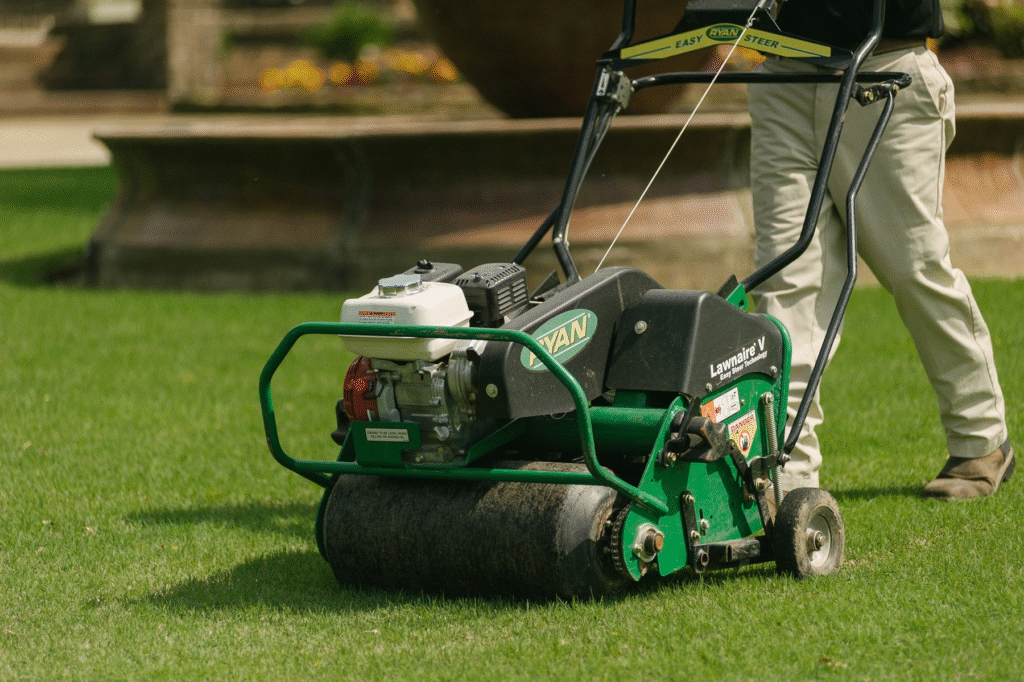
Materials/Tools List
- Core aerator (rental or purchase)
- Soil test kit
- Garden rake
- Irrigation flags
- Grass seed (matching existing lawn type)
- Compost or topsoil
- Fertilizer (balanced NPK ratio)
- Water source and sprinkler
- Safety glasses and closed-toe shoes
Step-by-Step Instructions
1. Determine if Aeration is Needed
- The Screwdriver Test: Insert a screwdriver into your lawn. If it doesn’t easily penetrate 4-6 inches, your soil is compacted.
- The Water Test: If water pools rather than absorbs after rainfall, aeration will improve drainage.
- Visual Assessment: Thinning grass, excessive thatch (over ½ inch), or heavy foot traffic areas indicate need for aeration.
2. Time Your Aeration Perfectly
- Cool-Season Grasses (Kentucky bluegrass, fescue, ryegrass): Aerate in early fall (September-October) or early spring (March-April)
- Warm-Season Grasses (Bermuda, zoysia, St. Augustine): Aerate in late spring to early summer (May-June)
- Avoid: Summer aeration for cool-season grasses; winter aeration for all grass types
3. Prepare Your Lawn
- Mark sprinkler heads and shallow utilities with irrigation flags
- Mow the lawn slightly shorter than usual (not below recommended height for your grass type)
- Water the lawn 1-2 days before aeration (1 inch of moisture) to soften soil
- Clear the area of debris, toys, and obstacles
4. Execute the Aeration
- Set the aerator to remove cores 2-3 inches deep
- Make two passes across the lawn in perpendicular directions
- Focus extra passes on heavily compacted areas
- Leave soil cores on the lawn surface to break down naturally
5. Post-Aeration Lawn Care
- Apply seed immediately after aeration for best seed-to-soil contact
- Top-dress with ¼ inch of compost or topsoil
- Apply fertilizer according to soil test recommendations
- Water lightly and frequently until new grass establishes
- Avoid heavy foot traffic for 2-3 weeks
Expert Tips
- Soil Testing: Complete a soil test before aeration to address any pH or nutrient deficiencies simultaneously
- Thatch Management: If thatch exceeds ¾ inch, dethatch before aerating
- Equipment Selection: A powered core aerator that removes ½-inch diameter plugs 2-3 inches deep provides optimal results
- Regional Timing: In transition zones, follow cool-season grass timing if your lawn is primarily cool-season varieties
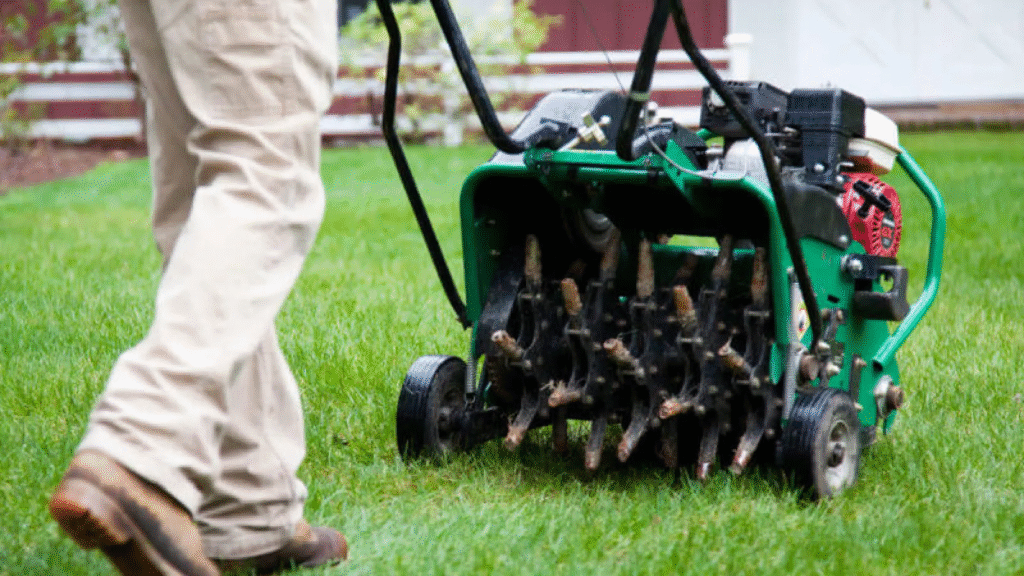
Common Mistakes
- Aerating at the wrong time: Summer aeration can stress cool-season lawns
- Insufficient soil moisture: Dry soil prevents proper core removal
- Single-direction aeration: Making only one pass reduces effectiveness
- Removing soil cores: Allow cores to decompose and return nutrients to soil
- Ignoring post-aeration care: The recovery period is critical for maximum benefits
Visual Evidence
[Hero Image: Before/after comparison of a lawn showing improved density and color six weeks after aeration]
[Step Photos: Sequence showing proper aerator operation, appropriate core depth, and recovery timeline at 1, 3, and 6 weeks]
[Diagram: Cross-section showing how aeration improves root development]

Seasonal Calendar
| Grass Type | Prime Aeration Window | Avoid Aeration | Secondary Window |
|---|---|---|---|
| Kentucky Bluegrass | Sept 1-Oct 15 | June-Aug | March 15-April 30 |
| Tall Fescue | Sept 1-Oct 30 | June-Aug | March 1-April 15 |
| Bermudagrass | May 1-June 30 | Oct-March | None |
| Zoysia | May 15-July 15 | Oct-April | None |
| St. Augustine | June 1-July 15 | Oct-April | None |
Regional Adaptations
- Arid Regions (Zones 7-10): Water more deeply before aeration; aerate in early morning to reduce moisture loss
- Northern Regions (Zones 3-5): Focus on fall aeration for cool-season grasses; extend spring window as needed
- Transition Zone (Zones 6-7): Consider splitting aeration between fall and spring for mixed lawns
- Coastal Areas: Adjust timing earlier in spring and later in fall due to moderate temperatures
Environmental Benefits
- Reduces runoff and soil erosion by improving water infiltration
- Decreases need for fertilizer and pesticide applications
- Enhances drought resistance, reducing irrigation requirements
- Strengthens natural disease resistance in grass plants
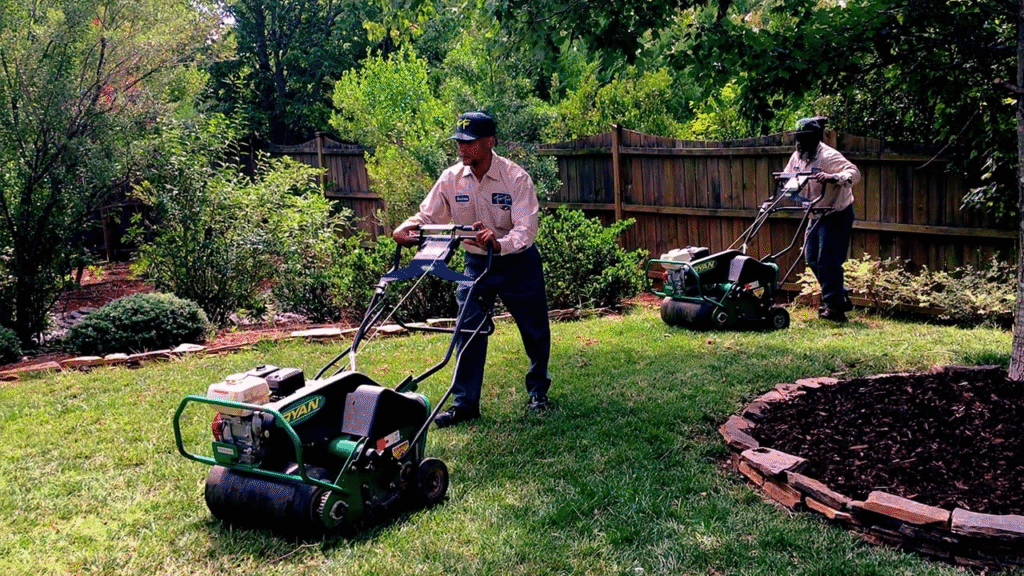
Sources:
- University of Maryland Extension, “Lawn Aeration and Overseeding Guide” (2023)
- Dr. James Richardson, Turfgrass Science Department, Michigan State University, Interview (March 2024)
- Soil Science Society of America, “Compaction Management in Urban Soils” (2022)
